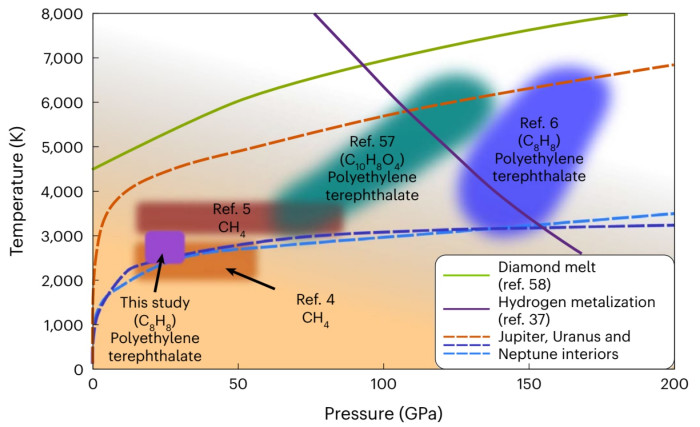“Diamond precipitation dynamics from hydrocarbons at icy planet interior conditions”
- Authors
M. Frost, R.S. McWilliams, E. Bykova, M. Bykov, R.J. Husband, L.M. Andriambariarijaona, S. Khandarkhaeva, B. Massani, K. Appel, C. Baehtz, O.B. Ball, V. Cerantola, S. Chariton, J. Choi, H. Cynn, M.J. Duff, A. Dwivedi, E. Edmund, G. Fiquet, H. Graafsma, H. Hwang, N. Jaisle, J. Kim, Z. Konôpková, T. Laurus, Y. Lee, H.-P. Liermann, J.D. McHardy, M.I. McMahon, G. Morard, M. Nakatsutsumi, L.A. Nguyen, S. Ninet, V.B. Prakapenka, C. Prescher, R. Redmer, S. Stern, C. Strohm, J. Sztuk-Dambietz, M. Turcato, Z Wu, S.H. Glenzer, and A.F. Goncharov
- Journal
Nature Astronomy
Vol.8(2), pp.174-181, 2024.02 - DOI
Abstract
The pressure and temperature conditions at which precipitation of diamond occurs from hydrocarbon mixtures is important for modelling the interior dynamics of icy planets. However, there is substantial disagreement from laboratory experiments, with those using dynamic compression techniques finding much more extreme conditions are required than in static compression. Here we report the time-resolved observation of diamond formation from statically compressed polystyrene, (C8H8)n, heated using the 4.5 MHz X-ray pulse trains at the European X-ray Free Electron Laser facility. Diamond formation is observed above 2,500 K from 19 GPa to 27 GPa, conditions representative of Uranus’s and Neptune’s shallow interiors, on 30 μs to 40 μs timescales. This is much slower than may be observed during the ∼10 ns duration of typical dynamic compression experiments, revealing reaction kinetics to be the reason for the discrepancy. Reduced pressure and temperature conditions for diamond formation has implications for icy planetary interiors, where diamond subduction leads to heating and could drive convection in the conductive ice layer that has a role in their magnetic fields.












